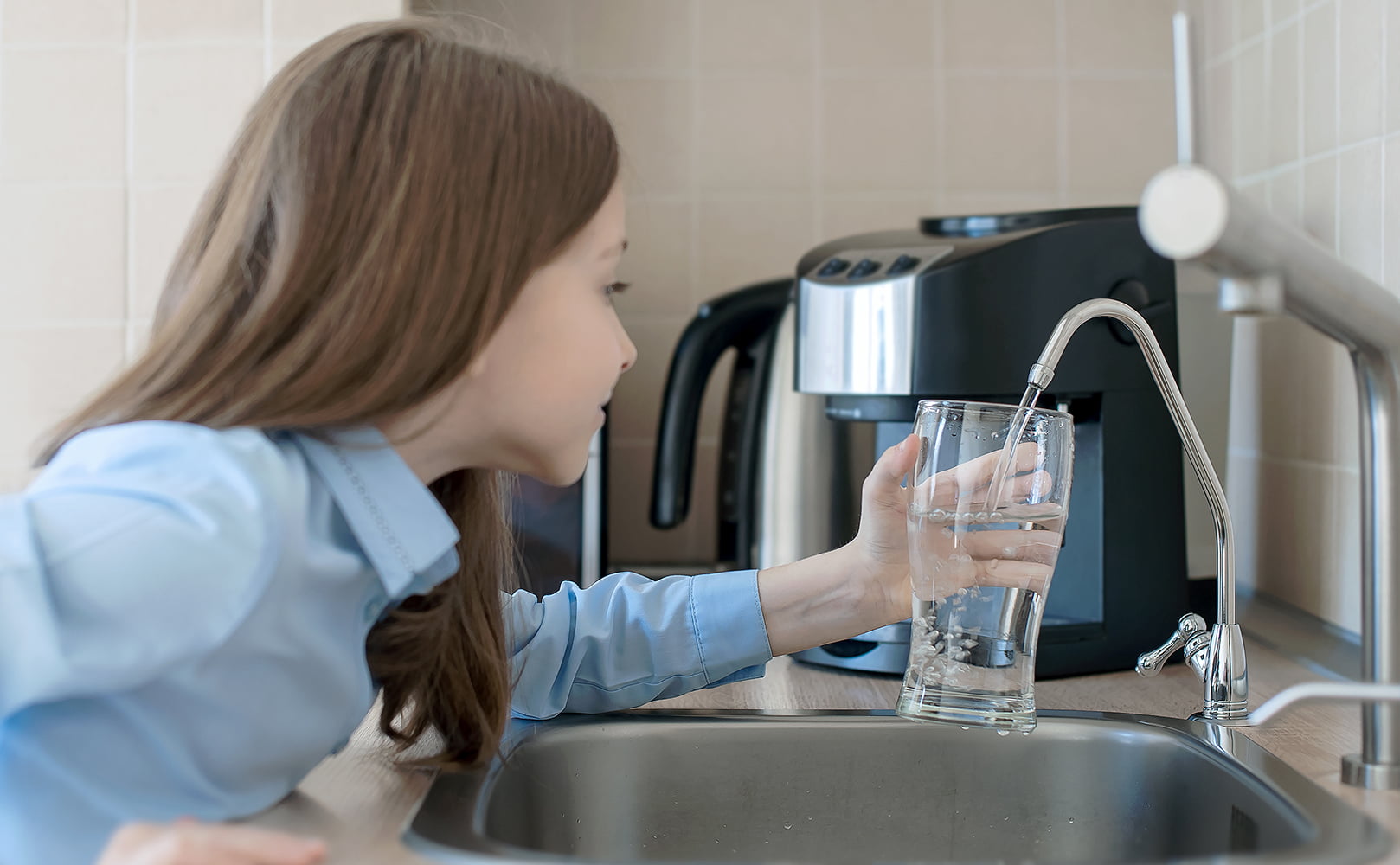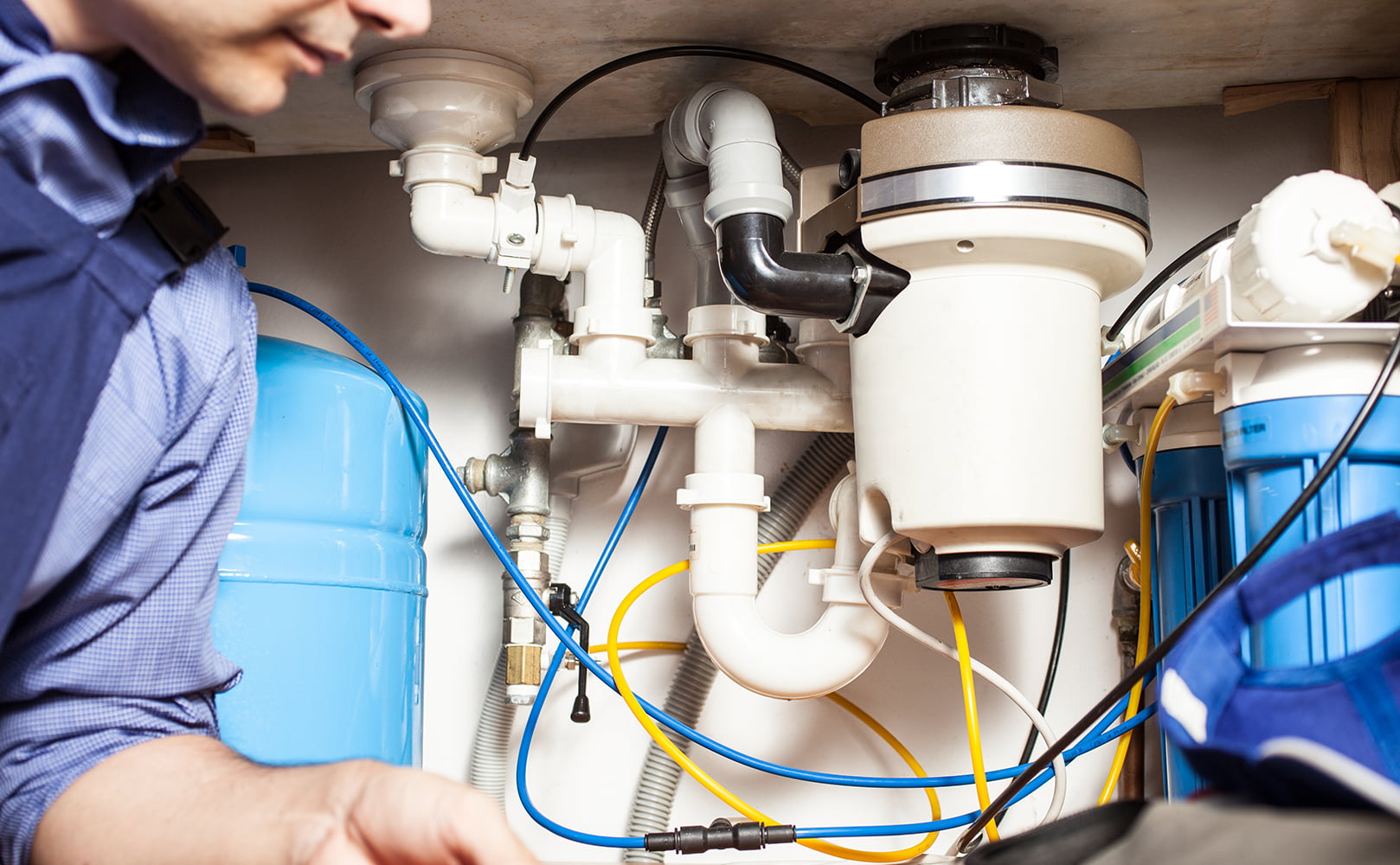How to Install a Reverse Osmosis Faucet Step by Step
Written by: Gene Fitzgerald // Last Updated: Feb 12, 2023
This page may contain affiliate links. If you buy a product or service through such a link we earn a commission at no extra cost to you. Learn more.
One of the great things about reverse osmosis faucets is that they don’t require any professional help for their installation.
As long as you know how to use some basic tools, you should be able to do the job yourself.
Here’s a complete overview of the process.
Key Takeaways
To install a reverse osmosis faucet, you need to:
- Drill a hole through your kitchen sink or countertop or reuse an existing hole.
- Mount the faucet securing it with washers and nuts.
- Hook up the RO faucet to your filter system using the appropriate tubing.
The installation procedure varies if you are installing an air gap reverse osmosis faucet.
How to Install a Reverse Osmosis Faucet Step by Step
So, how to install a reverse osmosis faucet?
Before you begin, make sure you’re familiar with your kitchen’s layout and know where the cold water shutoff valve to your sink is (usually right beneath the sink).
You should also prepare all the tools you’ll need so that you don’t have to pause the installation process to look for them.
Tools You’ll Need
Here are some of the tools and equipment you’re going to need for installing your RO faucet. Keep in mind that this list can vary from one faucet model to another.
- Reverse osmosis faucet unit
- Appropriate tubing
- Power drill and drill bits
- Screwdriver
- Utility knife
- Adjustable wrench
- One or more towels
- Center punch
Faucet Location
Pay attention to the size of the RO faucet once it’s installed and think carefully about where you want to place it. It should not interfere with your normal use of the kitchen sink.
Also, you may have an existing hole in your sink or countertop which you can reuse. Or maybe there’s a soap dispenser that you no longer require and you can remove it to free up its hole.
Reverse Osmosis Faucet Installation Instructions
Once you have everything prepared and know where you want to install the faucet, it’s time to get to work.
1. Drilling
Prepare the right drill bits for the material you want to drill through and check the guidelines of your sink/countertop manufacturer to check if there are any special procedures you need to follow.
Drilling Through Stainless Steel Sinks
Stainless steel sinks are easy to drill through. Just mark your hole with a center punch and use a small drill bit, usually 1/4″. Once you’ve made the initial hole, keep switching to increasingly larger drill bits to enlarge the opening if need be.
Drilling Through Porcelain, Ceramic, Enamel, Cast Iron, and Other Materials
Drilling through sinks made of porcelain, ceramic, enamel, and other similar materials can require a bit more effort. You should start with a small bit, applying very gentle pressure and moving as slowly as you can. As soon as you see the drill bit poking through, swap it for a larger one and keep drilling to increase the size of the hole gradually.
2. Mounting the Faucet
To mount the reverse osmosis faucet, simply add the base plate and the washers to the faucet and then run the stem through the hole you just drilled from the top. Secure the faucet in place with the washer and nut on the other end.
3. Tubing Connections
Now you’re ready to hook up the tubing connection. This should be pretty straightforward, and the faucet manufacturer should have detailed guidelines that you can follow. Make sure to follow any special notation on the tubing to ensure that everything is hooked up in the right spot.
What you usually have to do is use a compression nut to attach a single water line, the one that carries the filtered RO water up the sink, to the threaded faucet steam and that’s it.
Installing Air Gap vs Non-Air Gap RO Faucets
Depending on whether you’re using an air gap RO faucet or a non-air gap one, you’ll have to make some slight adjustments to the installation procedure. The main difference is that you’ll need to make a larger hole for the faucet if you decide to use an air gap. You’ll also have some additional tubing connections to take care of – 3 in total.
An important consideration here is to ensure that the drain line runs directly downwards and in the direction of the drain clamp. It should have no loops or bends along the way. Be especially careful not to create any up/down transitions that can potentially trap water.
Do I Need to Drill a New Hole for My RO Faucet?
You may already have an open hole in your sink from another fixture that you can reuse. This is common if you’ve ever had a soap dispenser, for example. Keep in mind that this approach is not always optimal, though.
There are some situations that don’t call for drilling anything in the first place. For example, if you’re hooking up your reverse osmosis system to your fridge or ice maker, you can get a special connection kit that can address any issues in hooking it up. In this case, you don’t need to drill any holes.
You may also be able to win an extra hole or two by removing your sink’s base plate (check underside first to confirm).
Replacing the Kitchen Faucet with a Triple Faucet
You can also go one step further and replace your kitchen faucet with a triple faucet. This is a more advanced configuration that combines the best of both worlds, filtered and unfiltered water. You can have regular cold water, hot water, as well as filtered water that’s passed through a reverse osmosis purifier all in one faucet.
That way, you can choose to dispense unfiltered water when you need to, instead of wasting power and water running the reverse osmosis system.
This type of faucet works as a direct replacement for a regular kitchen faucet, and you should be able to reuse the existing hole from the previous faucet in most cases. The hole size should be the same as well.
If you have any questions about reverse osmosis faucet installation please don’t hesitate to leave a comment below!
Information provided on BOS is for educational purposes only. The products and services we review may not be right for your individual circumstances.
We adhere to strict editorial guidelines. Rest assured, the opinions expressed have not been provided, reviewed, or otherwise endorsed by our partners – they are unbiased, independent, and the author’s alone. Our licensed experts fact-check all content for accuracy. It is accurate as of the date posted and to the best of our knowledge.



